Filter by

Nanoporous Alumina
This book gives detailed information about the fabrication, properties and applications of nanoporous alumina. Nanoporous anodic alumina prepared by low-cost, simple and scalable electrochemical anodization process due to its unique structure and properties have attracted several thousand publications across many disciplines including nanotechnology, materials science, engineering, optics, elec…
- Edition
- 1
- ISBN/ISSN
- 0933-033X
- Collation
- XIV, 362
- Series Title
- Springer Series in Materials Science
- Call Number
- -

Neural Engineering:From Advanced Biomaterials to 3D Fabrication Techniques
This book covers the principles of advanced 3D fabrication techniques, stem cells and biomaterials for neural engineering. Renowned contributors cover topics such as neural tissue regeneration, peripheral and central nervous system repair, brain-machine interfaces and in vitro nervous system modeling. Within these areas, focus remains on exciting and emerging technologies such as highly develop…
- Edition
- 1
- ISBN/ISSN
- 978-3-319-31431-0
- Collation
- VIII, 306
- Series Title
- -
- Call Number
- -
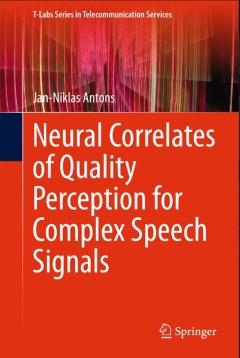
Neural Correlates of Quality Perception for Complex Speech Signals
This book interconnects two essential disciplines to study the perception of speech: Neuroscience and Quality of Experience, which to date have rarely been used together for the purposes of research on speech quality perception. In five key experiments, the book demonstrates the application of standard clinical methods in neurophysiology on the one hand and of methods used in fields of research…
- Edition
- 1
- ISBN/ISSN
- 978-3-319-15520-3
- Collation
- XIV, 97
- Series Title
- T-Labs Series in Telecommunication Services
- Call Number
- -

Nanoscale Materials in Targeted Drug Delivery, Theragnosis and Tissue Regener…
This book is the first of its kind to offer a comprehensive and up-to-date discussion of the use of nanoscale materials for biomedical applications, with a particular focus on drug delivery, theragnosis and tissue regeneration. It also describes in detail the methods used in the preparation of nanoparticles. Response of nanoparticles in biological systems are also explored. Nanotechnology ha…
- Edition
- 1
- ISBN/ISSN
- 978-981-10-0817-7
- Collation
- XIX, 172
- Series Title
- -
- Call Number
- -
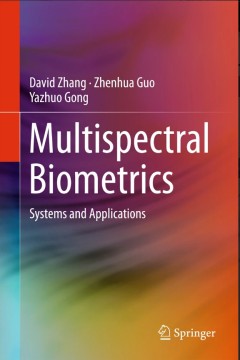
Multispectral Biometrics
Describing several new biometric technologies, such as high-resolution fingerprint, finger-knuckle-print, multi-spectral backhand, 3D fingerprint, tongueprint, 3D ear, and multi-spectral iris recognition technologies, this book analyzes a number of efficient feature extraction, matching and fusion algorithms and how potential systems have been developed. Focusing on how to develop new biometric…
- Edition
- 1
- ISBN/ISSN
- 978-3-319-22484-8
- Collation
- XI, 229
- Series Title
- -
- Call Number
- -
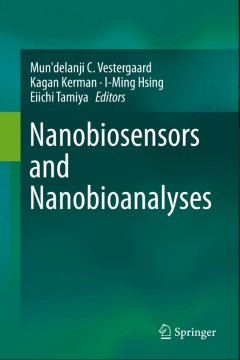
Nanobiosensors and Nanobioanalyses
This book provides a comprehensive review of established, cutting-edge, and future trends in the exponentially growing field of nanomaterials and their applications in biosensors and bioanalyses. Part I focuses on the key principles and transduction approaches, reviewing the timeline featuring the important historical milestones in the development and application of nanomaterials in biosensors …
- Edition
- 1
- ISBN/ISSN
- 978-4-431-56267-2
- Collation
- XI, 379
- Series Title
- -
- Call Number
- -
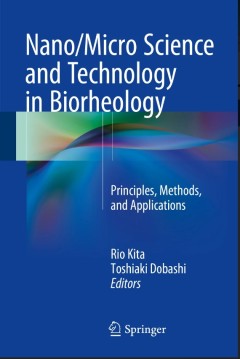
Nano/Micro Science and Technology in Biorheolog
Integrating basic to applied science and technology in medicine, pharmaceutics, molecular biology, biomedical engineering, biophysics and irreversible thermodynamics, this book covers cutting-edge research of the structure and function of biomaterials at a molecular level. In addition, it examines for the first time studies performed at the nano- and micro scale. With innovative technologies an…
- Edition
- 1
- ISBN/ISSN
- 978-4-431-56159-0
- Collation
- VIII, 443
- Series Title
- -
- Call Number
- -

Multiscale Characterization of Biological Systems
This book covers the latest research work done in the area of interface mechanics of collagen and chitin-based biomaterials along with various techniques that can be used to understand mechanics of biological systems and materials. Topics covered include Raman spectroscopy of biological systems, scale dependence of the mechanical properties and microstructure of crustaceans thin films as biomim…
- Edition
- 1
- ISBN/ISSN
- 978-1-4939-3451-5
- Collation
- X, 93
- Series Title
- -
- Call Number
- -
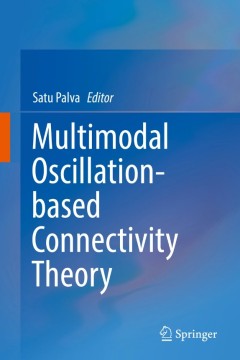
Multimodal Oscillation-based Connectivity Theory
Systems-level neuronal mechanisms that coordinate the temporally, anatomically, and functionally distributed neuronal activity into coherent cognitive operations in the human brain have remained poorly understood. In humans, neuronal oscillations and synchronization can be recorded non-invasively with electro- and magnetoencephalography (EEG and MEG) that have excellent temporal resolution and …
- Edition
- 1
- ISBN/ISSN
- 978-3-319-32263-6
- Collation
- VII, 147
- Series Title
- -
- Call Number
- -

Empirical Modeling and Data Analysis for Engineers and Applied Scientists
This textbook teaches advanced undergraduate and first-year graduate students in Engineering and Applied Sciences to gather and analyze empirical observations (data) in order to aid in making design decisions. While science is about discovery, the primary paradigm of engineering and "applied science" is design. Scientists are in the discovery business and want, in general, to understand the …
- Edition
- -
- ISBN/ISSN
- 978-3-319-32768-6
- Collation
- 40 b/w illustrations, 61 illustrations in colour
- Series Title
- -
- Call Number
- -
 Computer Science, Information & General Works
Computer Science, Information & General Works  Philosophy & Psychology
Philosophy & Psychology  Religion
Religion  Social Sciences
Social Sciences  Language
Language  Pure Science
Pure Science  Applied Sciences
Applied Sciences  Art & Recreation
Art & Recreation  Literature
Literature  History & Geography
History & Geography